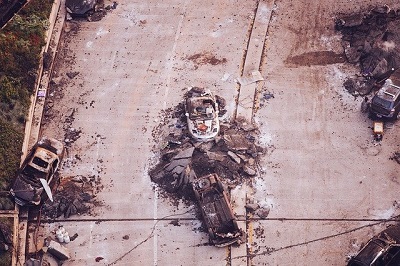The stability and predictability that have defined terrorism insurance for decades is challenged by a rapidly changing threat landscape, calling into question the validity of long-standing assumptions around terrorism events that underpin scenario modelling and pricing strategies.
 This assessment comes from a new report, ‘Beyond the Blast: Capital Management of Tomorrow’s Terror Threats’ report, launched by Lockton Re, the reinsurance arm of the world’s largest privately held broker, in partnership with Blackthorn, an advisory practice specialising in malicious risk.
This assessment comes from a new report, ‘Beyond the Blast: Capital Management of Tomorrow’s Terror Threats’ report, launched by Lockton Re, the reinsurance arm of the world’s largest privately held broker, in partnership with Blackthorn, an advisory practice specialising in malicious risk.
For years, the terrorism class has been considered a stable book of business for reinsurers, largely due to the existence of government backstops and the focus on traditional, blast-based scenarios.
However, experts now believe this predictability has evaporated. Niki Whitley, Director at Blackthorn, said: “For a reinsurance market primarily concerned with major loss events, acknowledging that further change is inevitable raises important questions about the validity of long-standing assumptions around terrorism events that underpin scenario modelling and pricing.
“As threats continue to evolve and associated impact severity (from an insurance perspective) remains dynamic, traditional processes could become increasingly misaligned with the realities of the risk transfer environment.”
The report identifies five key drivers accelerating this change:
- Strategic competition and the state–non-state nexus
- Political and social polarisation
- Technological innovations and regulatory gaps
- Climate change
- Convergence of established risk categories
The biggest threat, according to the report, lies in the interconnection of these factors. Alex Theodosiou, Blackthorn’s Research Manager, warns that threats are now “mutually amplifying.”
He stated: “Simply presupposing that future events will mirror the past can be dangerous in an increasingly nonlinear world. As highlighted, threats are increasingly interconnected and mutually amplifying – from cyberattacks that cascade into physical infrastructure failures to climate events that exacerbate social unrest and political violence.
“For reinsurers, the challenge lies in identifying fundamental changes that could alter core modelling assumptions before significant losses materialise.”
To meet the evolving change, the report calls for a shift in how the industry approaches risk modelling and data quality.
It looks at current standardised practices and issues concerning: exposed limits by radius, using model ‘what-if’ scenarios, issues around data for geocoding, building characteristics and emerging realistic disaster scenarios.
George Wragg, Senior Cat Modeller, Lockton Re, explained: “Deterministic WTPV (War, Terrorism and Political Violence) models, which simulate realistic ‘what-if’ bombing scenarios based on blast radius and damage gradients, offer a more accurate and nuanced view of portfolio risk compared to a traditional 100% PML approach.
“Ultimately, leveraging deterministic scenarios helps secure better-informed terrorism reinsurance strategies by aligning them more closely with realistic risk profiles. Modelling capabilities need advancement, and to take advantage of future development, investment in data quality now will enable quicker adoption, resulting in more accurate loss estimates.”
The post Deterministic models key for reinsurers to secure better-informed terror strategies: Lockton Re & Blackthorn appeared first on ReinsuranceNe.ws.
